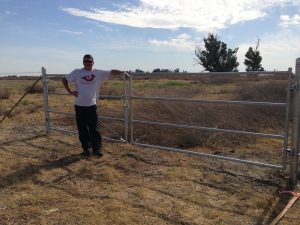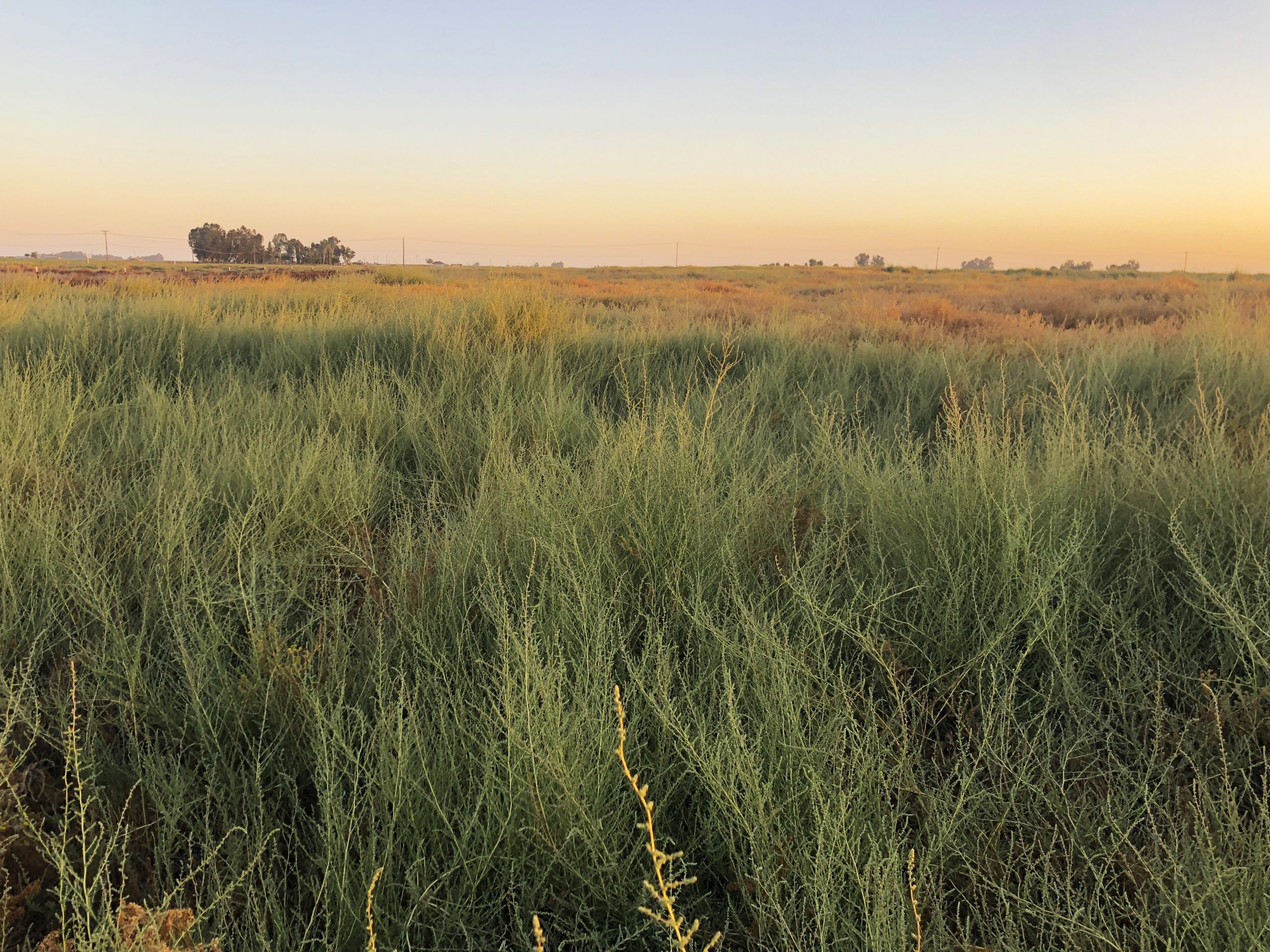
Dry vegetation covers the Redfeldt Preserve mound, a Yokut settlement that dates back to 1,700 years ago.
Having preserved an ancient mound site for more than 50 years, Gordon and Lucille Redtfeldt turned to the Conservancy to guarantee its preservation in perpetuity.
After returning from World War II, in which he served as a bomber pilot and was a war prisoner, Gordon Redtfeldt took an intense interest in California archaeology and Indian culture. He painted reproductions of Native American rock art and participated in amateur and professional archaeological excavations, becoming a member of the Archaeological Survey Association.
A cousin of Gordon’s wife, Lucille, owned property near the city of Hanford in the fertile San Joaquin Valley, and in the late 1950s the cousin decided to level a mound on his land in order to farm it. Gordon was asked to monitor the destruction of the mound, which happened to be a Yokut site located near ancient Tulare Lake.
A huge number of artifacts and approximately 44 human burials were uncovered before the work ceased. The remains were reburied and much of the mound was left intact. Recognizing the importance of the site, Gordon and Lucille purchased the mound property in March of 1958 to prevent further destruction.
Part of the Southern Valley Yokuts’ territory included the rivers and tributaries that emptied into the now-dry Tulare Lake. Within the last 150 years, the widespread use of agricultural plowing and land leveling in the San Joaquin Valley has threatened or destroyed most of the ancient mound settlements in the region. The Redtfeldt mound is an exception. “In my opinion, prior impacts to the site probably resulted in the destruction of some mound and mound skirt deposits representing no more than 15 percent of the total volume of cultural deposits,” said archaeologist Greg White, of SubTerra Consulting. He added that “over 75 percent of the original volume of the mound remains intact.”
The Redtfeldts turned the land into a private preserve and they subsequently allowed researchers to investigate the site. Nelson Siefkin, then a graduate student at the University of California Bakersfield, excavated the site and also analyzed the artifacts that were recovered when part of the mound was leveled. He did this for his master’s thesis, which he completed in 1999. It focused on the relationship between paleoenvironmental conditions, subsistence, and population trends among the Yokuts.
The artifacts from the mound site include ground and battered stone tools like handstones, pestles, and mortars, as well as projectile points, drills, and bifaces. Various ornaments and beads made of shell, steatite, and historic glass were also recovered. There was also faunal material from local birds, fish, reptiles, and mammals that were food staples for the Southern Valley Yokuts. Though only a small portion of the mound was excavated, these artifacts contribute to our understanding of the Yokuts, who occupied the mound from 1,700 to 500 years ago.

Western Regional Director Cory Wilkins stands in front of the security gate at Redtfeldt Archaeological Preserve.
Photo Credit: Deanna Commons for TAC
In early 2012 the Conservancy reached an agreement with the Redtfeldts to purchase the site to ensure its permanent preservation, and in December 2012 the acquisition was finalized. It was Gordon and Lucille’s desire to see the site, now known as the Redtfeldt Archaeological Preserve, be maintained for future generations.




